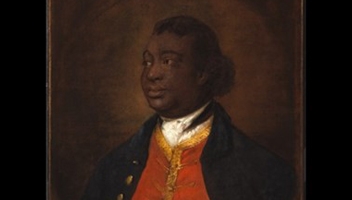We, like many insurers, have extensive records documenting our company's progress over many years, giving us invaluable social, economic, and cultural insights into the historic periods it insured. The London Metropolitan Archives Centre (LMA) undertook a massive project in 2021 to index over 240 of the 1,200 records from the Sun Insurance archives. This project showcases policyholders and businesses across London, providing insight into the people, places, and jobs undertaken over the years.
Let's explore the history of one of the oldest insurance companies, RSA, and understand how its beginnings are captured in detailed records.
Sun Fire Insurance records
The project focused on indexing the Sun Fire office records, a significant historical endeavour commissioned by a team of Archivists at the London Metropolitan Archives Centre (LMA). These records are the third most viewed at the centre, offering a wealth of information on policyholders, businesses, and the socio-economic landscape of London before the first comprehensive census in 1841. Out of 1,200 available records, 240 were indexed, focusing on the period before the census, particularly around 1790. While the records extend across the UK, the team concentrated specifically on London.
How fire insurance started
Fires were a frequent occurrence back in the 17th century; the Great Fire of London, which occurred in 1666, had devasting effects. Most properties were made of wood and built closely together in towns and cities across the UK and Europe, making fire a significant threat that many people feared. Fire insurance emerged as a response to the devastating effects of urban fires, with Dr Nicolas Barbon recognised as the pioneer of modern fire insurance.
In 1708, one of our founders, Charles Povey, decided to establish a fire insurance company called the Exchange House Fire Office, which later formed The Sun Fire Office in 1710.
What are fire marks?
In 1710, the Sun Fire Office was established and began issuing fire marks to identify insured properties. These marks were essential for indicating which properties had insurance cover and were supported by dedicated firefighting brigades. Fire marks typically displayed the insurer's logo, helping firefighters quickly identify the insurance policy associated with a property in case of a fire. Today, fire marks can still be seen on buildings and are highly collectable!
How was insurance sold?
Insurance was sold by pamphleteers who advertised insurers' services in coffee houses, a popular hub for business and social interactions during that period. Significant milestones in the evolution of fire insurance include the formation of Union Insurance in 1714 and London Assurance in 1720. Initially, these companies operated from coffee houses before establishing dedicated offices. The Sun Fire Office, founded in St Paul's Coffee House, became a cornerstone of this new and exciting industry.
Stories from our archives
Visiting the archives, you can discover stories from RSA's past, along with the standard policies. We insured buildings and collections at London Zoo, we have a scrapbook relating to the Tooley Street fire that took place on 22 June 1691 and policies documenting how we insured John Hunter's specimens (now in the Hunterian museum), including fossils, shells and insects. And, not forgetting, Gilbert Pidcock who on 23 April 1793 took out an insurance policy to insure rhinoceros and carriages to travel around the country for an exhibition. We can assume he was part of a circus!
We have previously told you stories about Ignatius and his wife Ann Santo and the literate giant Charles Darwin.
Our history is often intertwined with our country's fascinating past, with the introduction of fire insurance insuring people and companies who supported scientific and economic advancement during the Industrial Revolution!
The importance of insurance archives
Insurance companies have historically maintained extensive records, which serve many uses. These archives are invaluable for assessing risk, predicting future insurance needs, and determining premiums. Business archives, including those of insurance companies, preserve detailed records that offer insights into property structures and their evolution over time. Notably, Charles Goad's insurance maps provide comprehensive details about the structural composition of properties and their changes, which are essential for historical and risk assessment studies and give real insight into how people lived during that period.
The RSA archives are a treasure trove for social historians, offering a multifaceted view of the past. They reveal not just the history of a major insurance company but also London's fascinating social and economic history. By delving into these records, we can better understand how business, society, and daily life have changed over hundreds of years.




